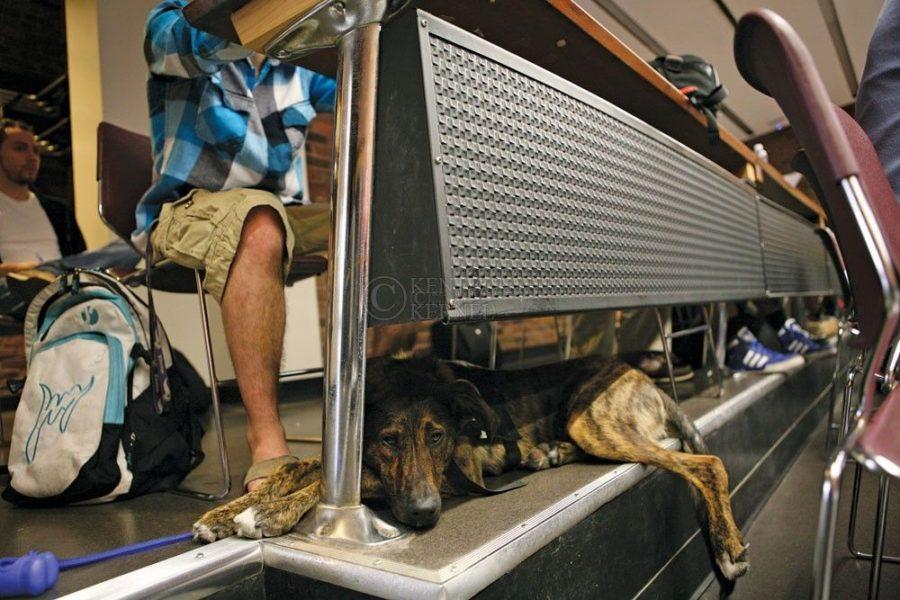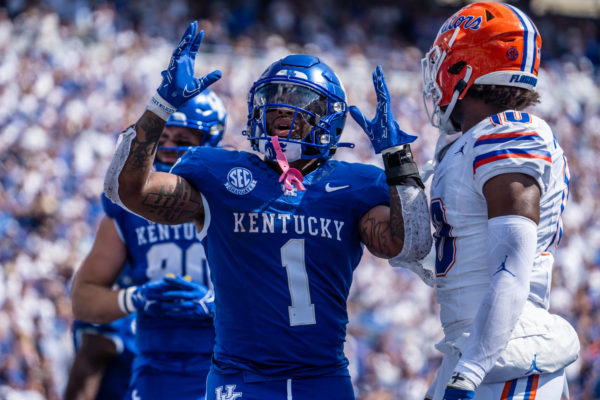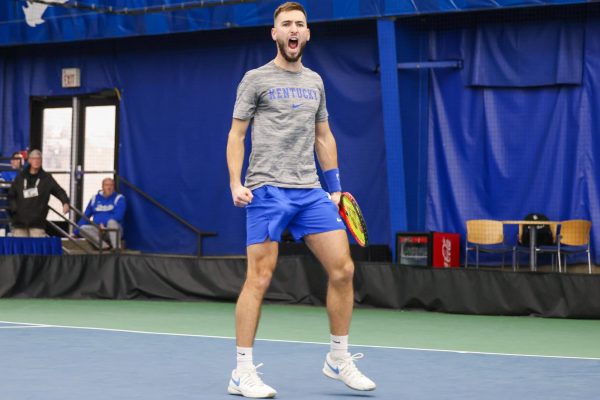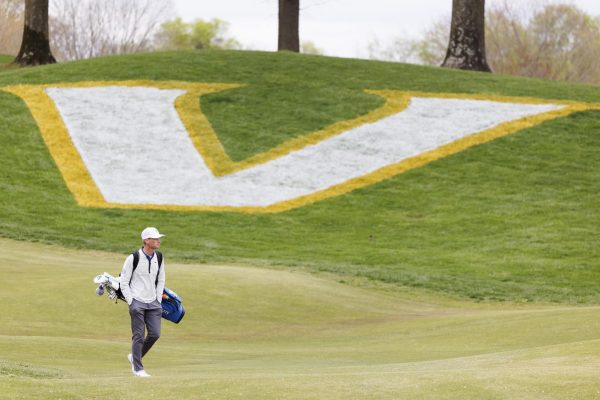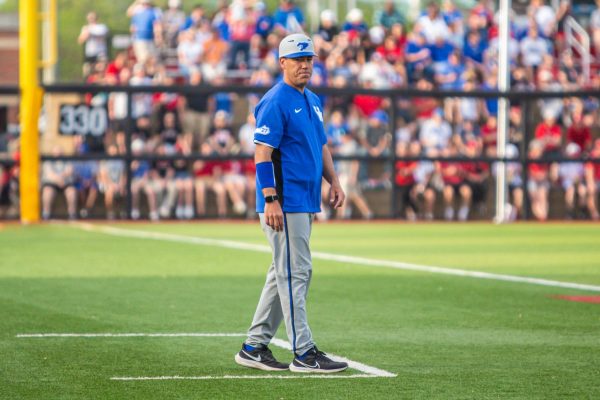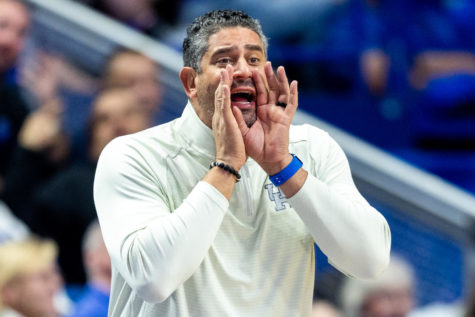Students train service dogs for the future
October 2, 2012
By Colleen Kochensparger
Wildcat Service Dogs is an on-campus organization where college students raise and train service dogs for the Collegiate Canines of America.
Students take the dogs with them everywhere for up to two years and teach them the behaviors they will need to help future owners.
“(Miles) will jump up and hit the handicap button with his nose,” said animal science sophomore Katie McKenzie.
Another service dog, Rory, will hit the button with her paw and has learned to close doors and the fridge, animal science sophomore Jennifer Lyons said.
These students have had their dogs for about four months and have taught the dogs basic commands such as sit, down-stay and heel. According to McKenzie, heel is one of the most important; the dogs need to know to always be on their owner’s left side, with or without a leash so their owners always know where their dogs are.
These trainers have had animal experience in the past and agree that Wildcat Service Dogs is one of the best experiences they’ve had with animals.
“I love how the program is so friendly and acceptable,” said family science sophomore Joseph De Cruz. “It is so supportive from the very beginning.”
The dogs are with these three students 24 hours a day, seven days a week, in order to become used to crowded surroundings, busy streets and university life. They have to adjust to people constantly moving around them and how to remain calm in a down-stay position even when people walk by without petting them, McKenzie said.
The public isn’t supposed to pet these dogs while they’re working—at least, not without asking. Lyons often takes this opportunity to inform people about the program and tell them that it’s acceptable to pet the dogs if the dogs stay in the sit command because currently they’re just in training. When the training dogs are out with their owners later in life, passers-by need to always ask before disturbing the dogs on duty.
De Cruz, Lyons and McKenzie agree that they’ve had varying responses from people as they walk around Lexington with their dogs.
“Today someone asked me if I was epileptic,” Lyons said.
“I’ve had someone tell me ‘Oh, I should get a vest for my dog so I can bring him into Target, too!’ ” McKenzie said.
And then the students must explain that the dogs are on duty and are being trained to assist people in need. The students joined the program for varying reasons.
“I have a neurological disorder myself, a brain tumor, and Miles is really sensitive to that, when I have an attack he’ll come up and whine. He is very supportive when it occurs in public,” McKenzie said.
And Rory is already good with kids, Lyons said. Lyons described the time a little girl was screaming in her mother’s arms, and Lyons told the mother that the girl could pet Rory; Rory licked the girl’s face and she immediately stopped crying.
“Her whole face just lit up. It was great,” she said.
De Cruz’s dog, Miller, is named for former UK basketbell player Darius Miller and has been learning the basic commands of “normal,” dogs like sitting and the more specific basic commands for service dogs such as “go touch.”
The dogs learn positive reinforcement via a clicker; the students can click after a good behavior and then give the dog a treat. Eventually the treats subside, but the students click after the dog does something helpful or correct, and that ends up being a reward in itself to the dogs—the clicker sound means they’ve earned the approval of their trainers.
The dogs don’t have permanent owners decided for them yet and they haven’t been learning any commands specific to their owners, which will differ depending on the owner’s needs.
Katie Skarvan, founder of Wildcat Service Dogs and Anna Mynchenberg, have already been talking to potential candidates. The students will eventually get to meet the person they’ll be passing the dogs off too, but the dogs still have a lot to learn before that day comes. In the meantime, the students can enjoy the hard work and rewards that come with training these dogs to help real people.
“I was really involved in high school and knew I wanted to be involved in college,” McKenzie said “It’s definitely my passion.”
De Cruz said the program accepts only four trainers each time out of the 20 or so students who take the initial course, but it’s worth it to be a part of the program.
“It’s like family,” De Cruz said.
“They try to match you with a dog based on personality,” Lyons said. “It’s a lot of work, but it’s really worth it.












































































































































